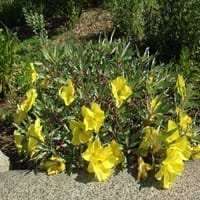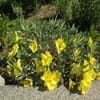Life Span
Perennial
Perennial
Type
Herbaceous Perennial, Perennial
Sedge or Rush
Origin
United States, Central United States, South-Central United States, Texas
Japan
Types
Not available
Not Available
Habitat
Bluffs, limestone outcrops, Prairies, Rocky areas
Lawn, shaded fields, Shaded sites
USDA Hardiness Zone
5-8
5-10
Sunset Zone
1a, 1b, 2a, 2b, 3a, 3b, 4, 5, 6, 7, 8, 9, 10, 11, 12, 13, 14, 15, 16, 17, 18, 19, 20, 21, 22, 23, 24
3a, 3b, 4, 5, 6, 7, 8, 9, 14, 15, 16, 17, 18, 19, 20, 21, 22, 23, 24
Habit
Spreading
Clump-Forming
Flower Color
Yellow, Lemon yellow, Gold
Tan
Flower Color Modifier
Bicolor
Bicolor
Fruit Color
Light Green, Tan
Brown
Leaf Color in Spring
Green
Dark Green, Gold
Leaf Color in Summer
Green
Dark Green, Gold
Leaf Color in Fall
Green
Dark Green, Gold
Leaf Color in Winter
Light Green
Dark Green, Gold
Leaf Shape
Lance shaped
Subulate
Plant Season
Spring, Summer
Spring, Summer, Fall, Winter
Sunlight
Full Sun, Partial Sun
Partial shade, Full Shade
Type of Soil
Loam, Sand
Clay, Loam, Sand
The pH of Soil
Acidic, Neutral, Alkaline
Acidic, Neutral
Soil Drainage
Well drained
Well drained
Bloom Time
Late Spring, Early Summer, Summer, Late Summer
Late Spring
Tolerances
Drought
Drought
Where to Plant?
Ground, Pot
Ground, Pot
How to Plant?
Divison, Seedlings
Rooted stem cutting, stem tip cuttings
Plant Maintenance
Medium
Medium
Watering Requirements
Average Water Needs, Do Not over Water, Requires regular watering
Needs more water during establishment, Water Deeply, Water in morning to avoid prompting diseases, Water in the early morning hours
In Summer
Lots of watering
Lots of watering
In Spring
Moderate
Moderate
In Winter
Average Water
Average Water
Soil pH
Acidic, Neutral, Alkaline
Acidic, Neutral
Soil Type
Loam, Sand
Clay, Loam, Sand
Soil Drainage Capacity
Well drained
Well drained
Sun Exposure
Full Sun, Partial Sun
Partial shade, Full Shade
Pruning
Remove damaged leaves, Remove dead branches, Remove dead leaves
Prune to control growth
Fertilizers
All-Purpose Liquid Fertilizer
All-Purpose Liquid Fertilizer, Apply N-P-K, Less fertilizing
Pests and Diseases
Leaf spot, Root rot
Disease free, Insects, Red blotch
Plant Tolerance
Drought
Drought, Rocky Soil, Shade areas, Variety of soil types, Wet Site
Flowers
Yes
Insignificant
Flower Petal Number
Single
Single
Foliage Texture
Medium
Fine
Foliage Sheen
Matte
Glossy
Attracts
Bugs, Butterflies, Flies, Flying insects, Insects
Aphids, Bugs, Mealybugs, Scale Insects
Allergy
Not Available
Not Available
Aesthetic Uses
Beautification, Decorating walls, Hanging Basket, Showy Purposes, Used as an interior landscaping species, Used for decorating walls, fences, gates, hedges, etc.
Beautification, Borders, Ground Cover, Landscape Designing
Beauty Benefits
Glowing Skin, Improve skin condition, Making cosmetics, used as a dye
Not Available
Environmental Uses
Air purification
Air purification
Medicinal Uses
Arthritis, cholesterol-lowering, Diarrhea, Eczema, Inflammation, lowering blood pressure
Not Available
Part of Plant Used
Whole plant
Leaves
Other Uses
Making Perfumes, Used as Ornamental plant, Used for bedding in gardens
Not Available
Used As Indoor Plant
Yes
Yes
Used As Outdoor Plant
Yes
Yes
Garden Design
Mixed Border, Rock Garden, Wall, Wildflower
Container, Edging, Groundcover, Mixed Border, Rock Garden / Wall
Botanical Name
OENOTHERA macrocarpa
CAREX hachijoensis 'Evergold'
Common Name
Bigfruit evening Primrose,Ozark sundrop,Missouri evening primrose
Carex oshimensis
Carex morrowii
In Hindi
Missouri primrose
Japanese Sedge
In German
Missouri Primel
japanische Segge
In French
Oenothera macrocarpa
Japanese carex
In Spanish
prímula Missouri
juncia japonesa
In Greek
Missouri primrose
japanische Segge
In Portuguese
Missouri Primrose
Sedge japonês
In Polish
Wiesiołek ozdobny
japoński turzyca
In Latin
Primrose Missouri
Sedge Italica
Phylum
Tracheophyta
Tracheophyta
Class
Magnoliopsida
Magnoliopsida
Family
Onagraceae
Cyperaceae
Clade
Angiosperms, Eudicots, Rosids
Angiosperms, Commelinids, Monocots
Tribe
Onagreae
Not Available
Subfamily
Onagroideae
Not Available
Season and Care of Missouri Primrose and Japanese Sedge
Season and care of Missouri Primrose and Japanese Sedge is important to know. While considering everything about Missouri Primrose and Japanese Sedge Care, growing season is an essential factor. Missouri Primrose season is Spring and Summer and Japanese Sedge season is Spring and Summer. The type of soil for Missouri Primrose is Loam, Sand and for Japanese Sedge is Clay, Loam, Sand while the PH of soil for Missouri Primrose is Acidic, Neutral, Alkaline and for Japanese Sedge is Acidic, Neutral.
Missouri Primrose and Japanese Sedge Physical Information
Missouri Primrose and Japanese Sedge physical information is very important for comparison. Missouri Primrose height is 15.20 cm and width 35.60 cm whereas Japanese Sedge height is 20.30 cm and width 30.50 cm. The color specification of Missouri Primrose and Japanese Sedge are as follows:
Missouri Primrose flower color: Yellow, Lemon yellow and Gold
Missouri Primrose leaf color: Green
Japanese Sedge flower color: Tan
- Japanese Sedge leaf color: Dark Green and Gold
Care of Missouri Primrose and Japanese Sedge
Care of Missouri Primrose and Japanese Sedge include pruning, fertilizers, watering etc. Missouri Primrose pruning is done Remove damaged leaves, Remove dead branches and Remove dead leaves and Japanese Sedge pruning is done Prune to control growth. In summer Missouri Primrose needs Lots of watering and in winter, it needs Average Water. Whereas, in summer Japanese Sedge needs Lots of watering and in winter, it needs Average Water.





